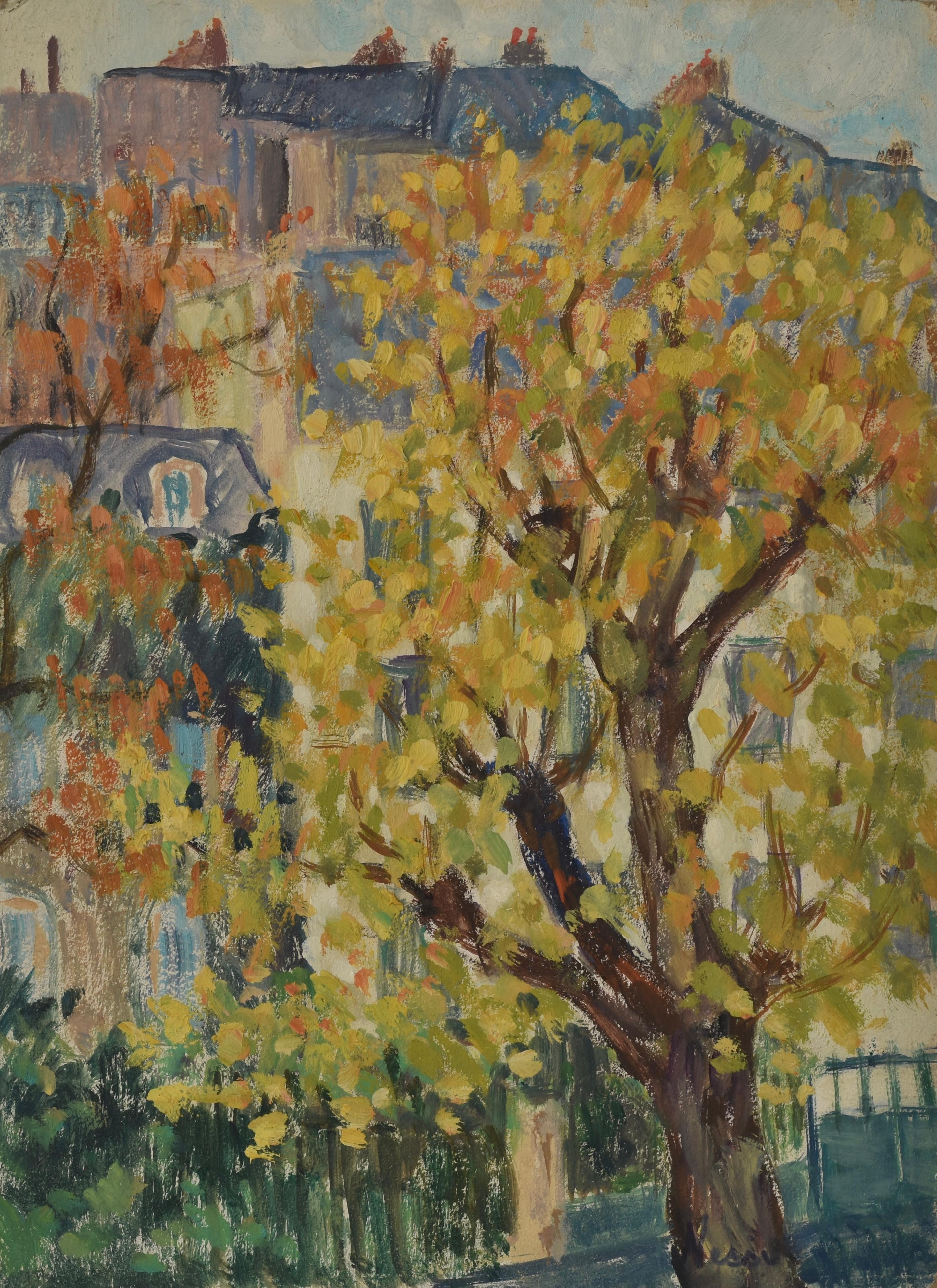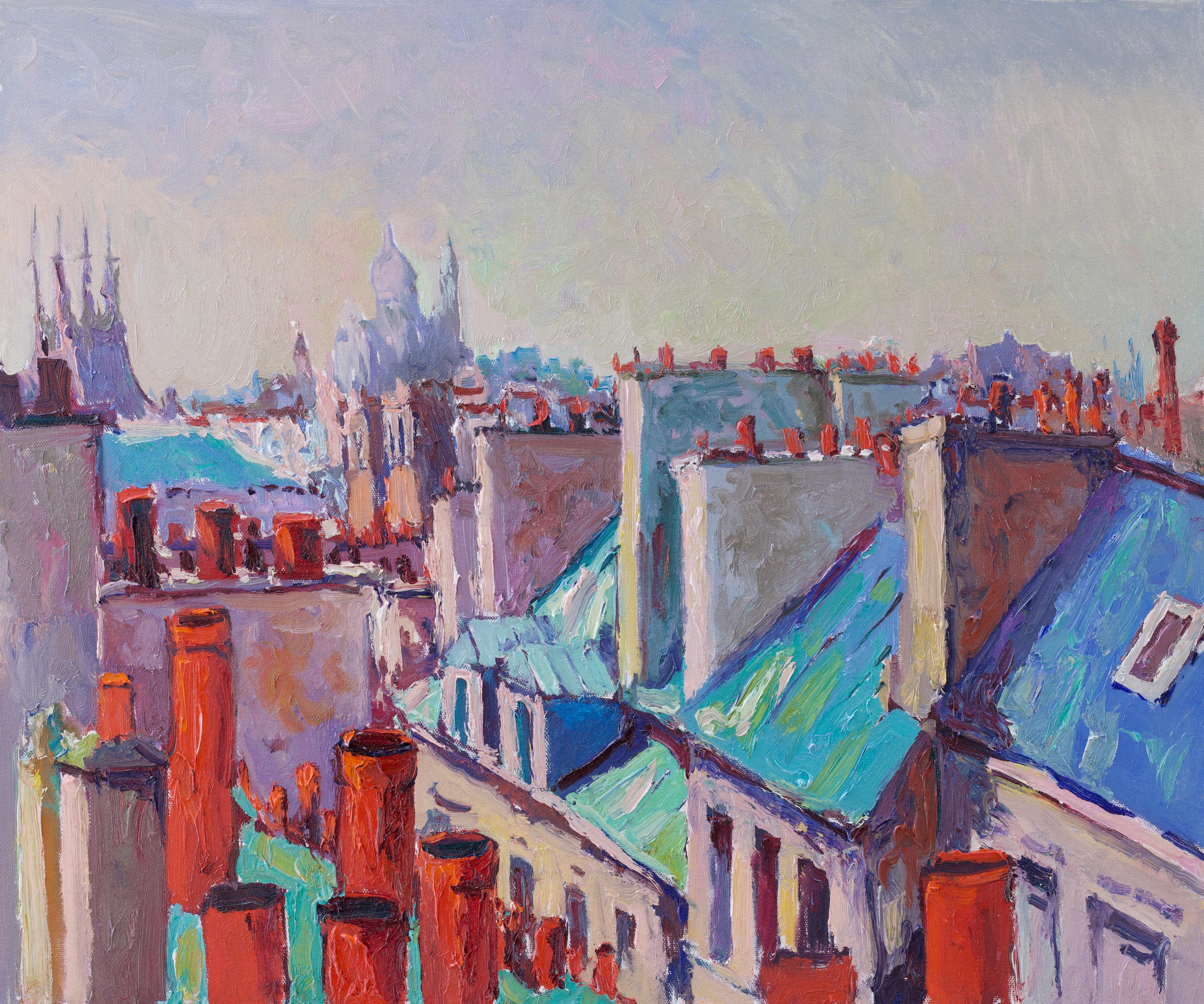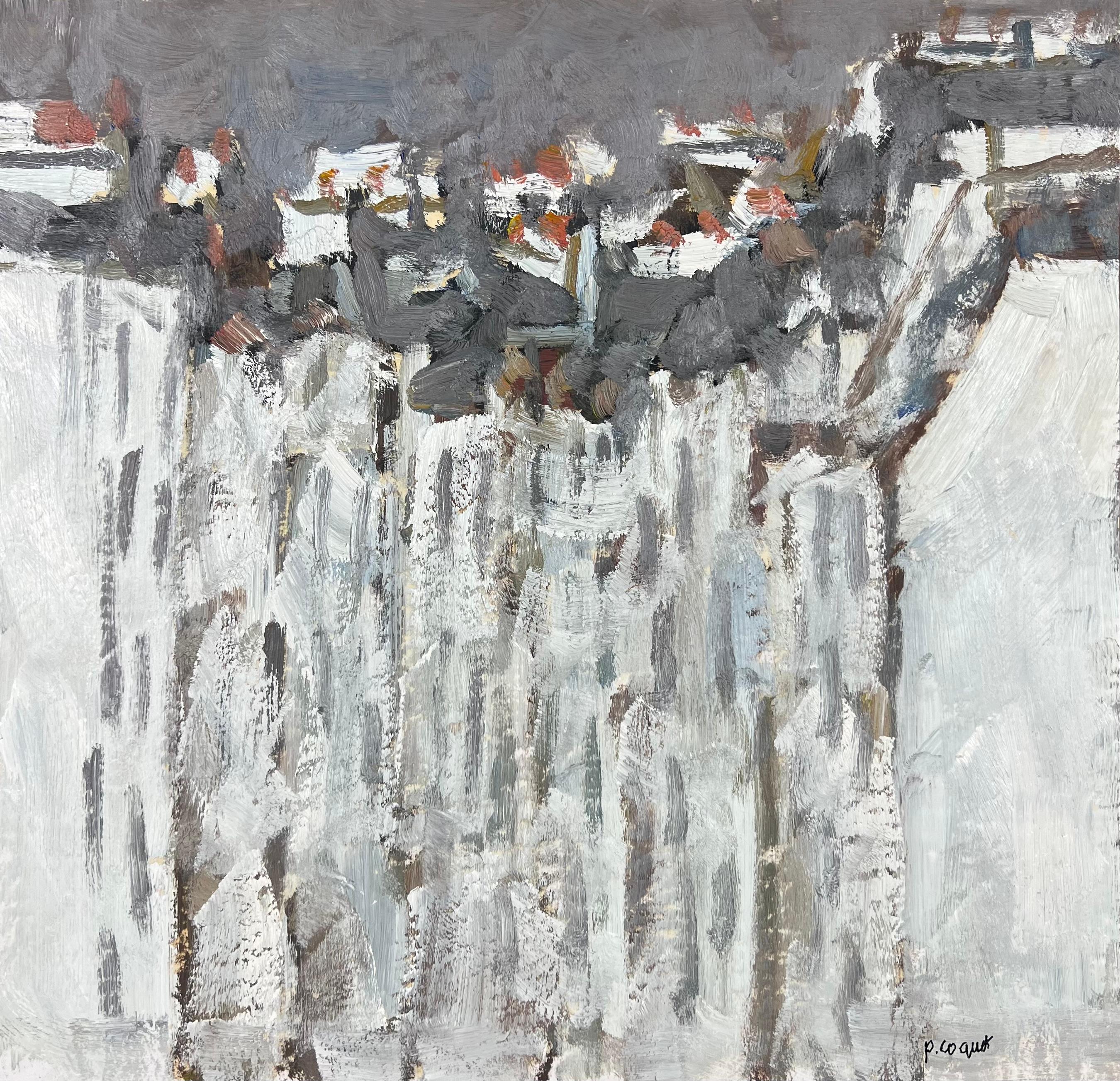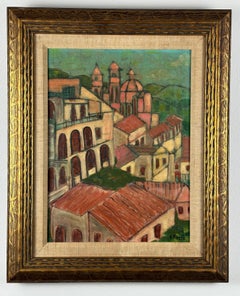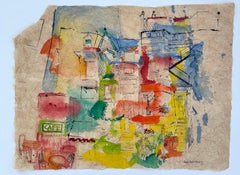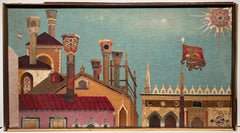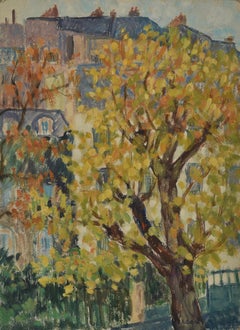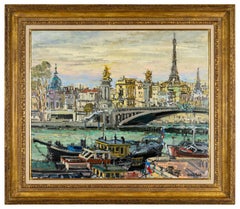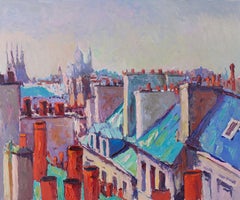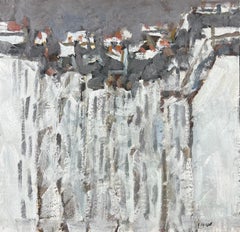Items Similar to Paris Rooftops
Want more images or videos?
Request additional images or videos from the seller
1 of 13
Claudine BerechelParis Rooftopsca. 1955
ca. 1955
$2,000
£1,509.57
€1,730
CA$2,791.51
A$3,041.10
CHF 1,606.02
MX$36,507.68
NOK 20,462.52
SEK 18,701.97
DKK 12,922.92
About the Item
Claudine Berechel (1925-2011)
Parisian Rooftops, ca. 1955-60
Oil on canvas measuring 15 x 24 inches. Framed measurement, 20 x 29 inches.
Signed lower center.
Janet Fleisher Gallery (Philadelphia) stamp on verso stretcher.
Painting depicts abstracted Paris rooftops in beautiful hues of teal complemented with reds. The Eiffel Tower is visible in background.
- Creator:Claudine Berechel (1925 - 2011, French)
- Creation Year:ca. 1955
- Dimensions:Height: 20 in (50.8 cm)Width: 29 in (73.66 cm)Depth: 1 in (2.54 cm)
- Medium:
- Movement & Style:
- Period:
- Condition:
- Gallery Location:Wilton Manors, FL
- Reference Number:1stDibs: LU245215803642
About the Seller
4.9
Platinum Seller
Premium sellers with a 4.7+ rating and 24-hour response times
Established in 2007
1stDibs seller since 2015
445 sales on 1stDibs
Typical response time: 3 hours
- ShippingRetrieving quote...Shipping from: Wilton Manors, FL
- Return Policy
More From This Seller
View AllPlace de Clichy Paris cityscape mid-century arcjitecture painting
Located in Wilton Manors, FL
Beautiful Parisian street scene depicts Place de Clichy.
Watercolor and pencil on paper. Sheet measures 14 x 20 inches.
Signed illegibly lower right and on back.
Category
Mid-20th Century Impressionist Landscape Paintings
Materials
Watercolor, Pencil
Italian Cityscape
Located in Wilton Manors, FL
Isabelle Graham Reese (1927-2005). Floral Still Life, ca. 1950s. Oil on canvas measuring 12 x 16 inches; 17.5 x 21.5 inches framed. Signed lower...
Category
Mid-20th Century Cubist Still-life Paintings
Materials
Oil
Winston Flowers Newbury St. Boston Cityscape
Located in Wilton Manors, FL
Judi Rotenberg (20th century). Winston Flowers, Newbury St. Boston, ca. 1970. Ink and watercolor on Awagami paper, sheet measures 18.5 x 24 inches. Uppe...
Category
1970s Abstract Abstract Paintings
Materials
Watercolor, Handmade Paper
Surrealist Rooftops Collage
Located in Wilton Manors, FL
Rita Boley Bolaffio (née Luzzatto; Trieste, Italy, 7 June 1898 - New York City, United States, 20 May 1995. Surrealist Rooftops. Collage on fabric, measures 19 x 34 inches framed. Ar...
Category
Mid-20th Century Surrealist Mixed Media
Materials
Fabric, Paper
Pont Neuf Paris France (bridge cityscape/ landscape double-sided painting)
Located in Wilton Manors, FL
Mieczyslaw Lurczynski (1908-1992). Pont Neuf/ Landscape. Double-sided canvas measures 10.5 x 13.75 inches. Canvas is a gessoed panel, unstretched. Signed lower right.
Category
Mid-20th Century Fauvist Landscape Paintings
Materials
Canvas, Oil
City at Night (Cityscape)
By Abram Tromka
Located in Wilton Manors, FL
Abram Tromka (1895-1964)
City at Night, ca. 1940.
Oil on canvas, 16 x 20 inches; 20 x 24 inches in antique oak frame. Signed lower right.
Frame is of the period, but probably not ...
Category
1930s American Modern Abstract Paintings
Materials
Canvas, Oil
You May Also Like
Paris Rooftops, Marie Lucie Nessi, Woman Post Impressionist, Oil paint, 1950
By Marie Lucie Nessi
Located in New York, NY
Marie Lucie Nessi-Valtat
Paris Rooftops, ca. 1950
Oil on panel
13 x 9 1/2 in l 33 x 24 cm
Frame size: 15 x 11 1/2 in. l 38 x 29 cm
Marie-Lucie Nessi Valtat was a French painter born...
Category
1950s Post-Impressionist Figurative Paintings
Materials
Oil
View of Paris
Located in Sheffield, MA
Vincent Fannell
French, born 20th century
View of Paris
Oil on canvas
30 by 36 in, w/ frame 40 ¼ by 46 ¼ in
Signed lower right
Category
Mid-20th Century Modern Paintings
Materials
Oil
Roofs of the City, Paris, Oil Painting
By Suren Nersisyan
Located in San Francisco, CA
Artist Comments
Parisian rooftops stand out with their distinctive charm, making the city's skyline instantly recognizable. The architecture, rich with patina, blends turquoise...
Category
21st Century and Contemporary Impressionist Interior Paintings
Materials
Oil
The roofs of Paris, oil painting by Pierre Coquet
Located in Montfort l’Amaury, FR
The roofs of Paris, oil painting by Pierre Coquet
Reference number F205
Framed with a natural oak floated frame painted in black
70 x 55 cm frame included (65 x 50 cm without frame)
This work is painted with oil on a paper that is mounted on a board and placed in a made to measure wood strectcher. It is signed in the bottom right.
Paris is one of Pierre most important subjects. Pierre's Paris is always depicted in a grey atmosphere. Buildings are stylized but the city is recognizable with its typical grey galvanised steel and orange terracota chimneys.
Provenance : Workshop of the artist (stamped and numbered on the back)
Pierre Coquet (1926-2021) is a French painter who was born in Limas near Lyon, France.
He entered the Ecole des Beaux Arts in Lyon in 1942 and followed the teaching of Antoine Chartres, Henri Vielly and René Chancrin...
Category
1980s French School Figurative Paintings
Materials
Oil
Paris city view
Located in Berlin, DE
Oil on cardboard
Signed in the middle at the bottom
54x42 cm
Rudolf Zender (1901-1988) is one of the most important realists in Swiss art. He trained as a painter in Frankfurt and...
Category
20th Century Abstract Landscape Paintings
Materials
Oil
$3,427
Paris roofs. 1930s. Oil on canvas, 60x80 cm
Located in Riga, LV
Paris roofs. 1930s. Oil on canvas, 60x80 cm
Category
1930s Impressionist Landscape Paintings
Materials
Canvas, Oil
$4,657 Sale Price
20% Off
